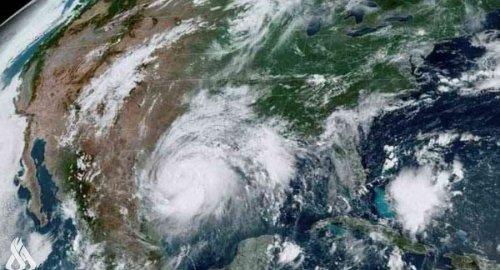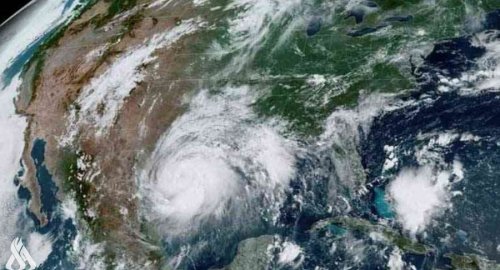
Cyclone Remal causes death and damage in Bangladesh, India

- 27-05-2024, 11:46
INA- sources
Coastal regions of India and Bangladesh were battered by strong winds and heavy rain from cyclone Remal as the storm made landfall late Sunday night.
The storm crossed the coastal regions of Bangladesh's Mongla port, and the adjoining Sagar Islands in India's West Bengal state, around midnight, with wind speeds measuring up to 135 kilometers per hour (about 84 miles per hour), the India Meteorological Department (IMD) said.
Strong winds, rain and flooding is expected throughout Monday as the storm moves inland and weakens.
"The system is likely to move north-northeastwards and gradually weaken into a Cyclonic Storm," the IMD said in a post on social media. "Thereafter, it would move northeastward and gradually weaken further."
Bangladeshi authorities said on Monday the death toll had risen to 10, with some 30,000 homes destroyed.
One person was killed in the eastern Indian city of Kolkata when concrete chunks fell on a man during the storm's peak, according to local police.
The low-lying coastal regions along the Bay of Bengal have witnessed frequent severe storms in recent years.
Remal is the first cyclone to hit the region this year.
Power infrastructure battered
Millions were left without electricity as the storm made landfall.Bangladesh authorities said they had shut down electricity supply to many areas in advance to avoid accidents. Some regions also lost power due to fallen electricity poles and damaged lines, they added.
TV stations reported that dozens of Bangladeshi coastal villages were flooded as many flood protection embankments were either washed away or damaged by the force of the storm.
In India's West Bengal, the state's Power Minister Arup Biswas said the electricity infrastructure was heavily damaged.
The ministry received reports of at least 356 uprooted electricity poles and scores of damaged transformers just during the first hour of the landfall process, Biswas said.
Thousands displaced
Bangladesh moved about 800,000 people from the port areas of Mongla and Chittagong and nine coastal districts to storm shelters on Sunday afternoon. Another 110,000 people were also taken to shelters in India.Bangladesh's capital city Dhaka set up nearly 8,000 cyclone shelters and mobilized 78,000 volunteers in preparation of the storm while the Indian navy said it had kept ships, aircraft, divers and medical supplies on standby.
The damage was worse in the river embankments in the Sunderbans delta — the largest mangrove forest in the world, shared by India and Bangladesh — where high tides breached protective embankments at many places.
More than 450,000 people have been killed in 12 major cyclones that have hit the Bangladeshi coastline since 1965, according to Bangladesh's 2016 report on disaster management preparedness.
source: DW
US Central Command: We killed ISIS terrorist leader Abu Yusuf in Syria
- International
- 24/12/20
Liverpool compete with Real Madrid to sign Olympique Lyonnais star
- Security
- 24/12/19
Iraq assumes presidency of Arab Investment Company’s Executive Board
- Economy
- 24/12/17
Hackers exploiting Microsoft Teams to gain remote access to user’s system
- Multimedia
- 24/12/17












